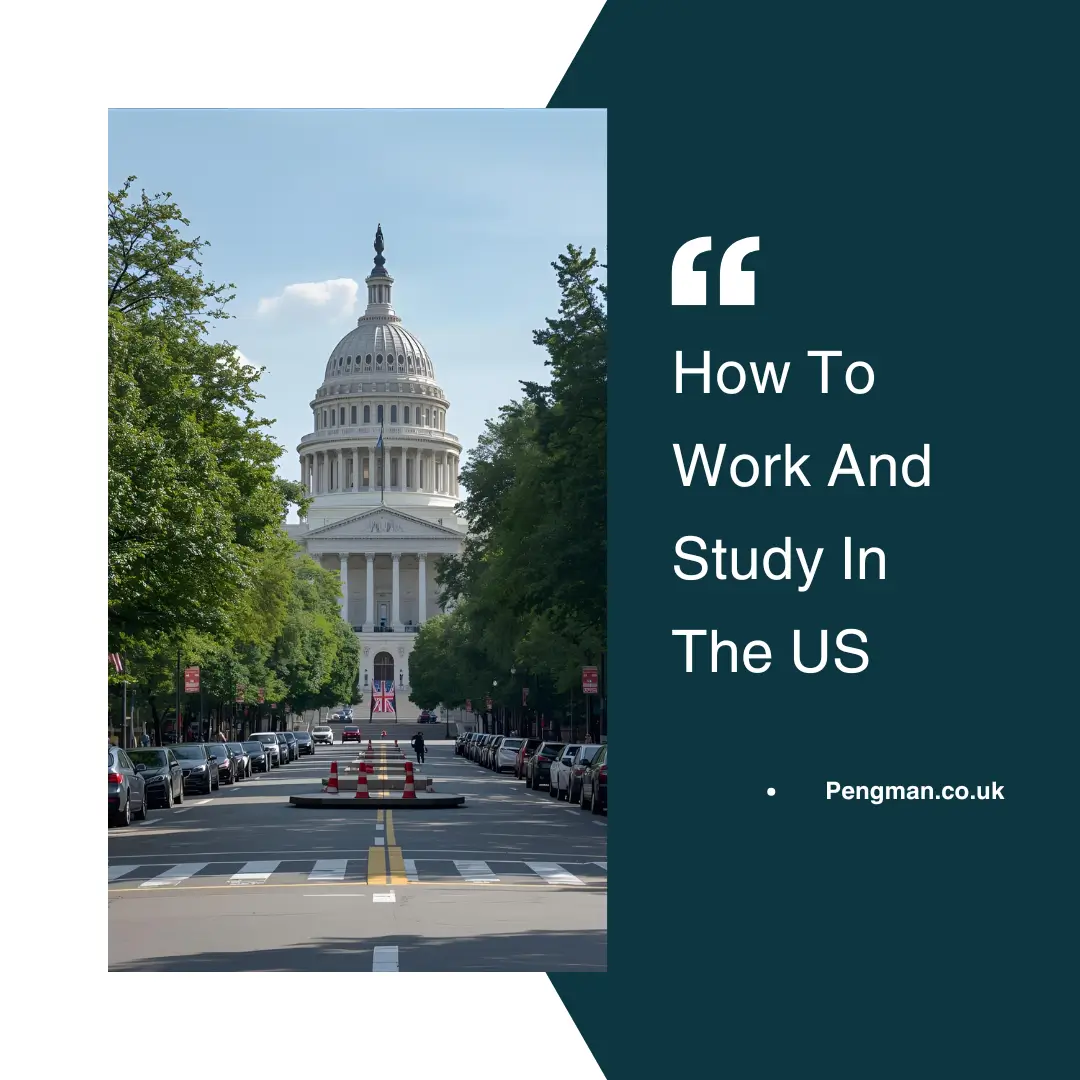How To Work And Study In the US can feel overwhelming for international students, but it’s absolutely achievable with the right guidance and planning. The United States offers countless opportunities to combine academics with valuable work experience — if you understand the visa rules and plan strategically.
In this comprehensive guide, Pangman recommends practical steps, legal options, and expert tips on how to work and study in the US effectively without violating your visa status.
Understanding Your US Student Visa Options
Before you start planning how to work and study in the US, it’s crucial to understand your visa category. The U.S. offers two main student visas:
F-1 Visa (Academic Student)
This is the most common visa for international students pursuing degrees at U.S. colleges or universities. It allows you to work under specific conditions like on-campus employment, CPT, or OPT.
M-1 Visa (Vocational Student)
Designed for students in vocational or non-academic programs. Work opportunities under this visa are limited compared to the F-1, but some training programs may qualify for practical experience.
Pengman Recommends: Always verify your visa type before accepting any employment offer. Working without proper authorization can lead to visa termination.
On-Campus Employment Rules and Benefits
Students with an F-1 visa can work up to 20 hours per week during school sessions and full-time during breaks. These roles may include working as a library assistant, cafeteria worker, or lab technician.
While the pay may not cover all expenses, on-campus jobs offer valuable experience and connections within your university community.
Pro Tip: Apply early each semester — positions fill up fast!
Curricular Practical Training (CPT) Explained
Curricular Practical Training (CPT) allows F-1 students to gain hands-on experience through paid or unpaid internships directly related to their field of study.
CPT must be authorized by your university’s Designated School Official (DSO) and must be an essential part of your academic program.
- CPT can be part-time (≤20 hours/week) or full-time (>20 hours/week).
- Full-time CPT for 12 months or more may make you ineligible for OPT later, so plan wisely.
Pengman Recommends: Discuss CPT options with your academic advisor early in your degree program to align it with your graduation goals.
Also check Step-by-Step Guide: How to Get a UK Skilled Worker Visa (formerly Tier 2)
Optional Practical Training (OPT) Opportunities
Optional Practical Training (OPT) gives F-1 students up to 12 months of work experience in their major area of study.
- You can apply before or after graduation (pre-completion or post-completion OPT).
- STEM graduates may qualify for a 24-month extension.
- All OPT employment must be approved by the U.S. Citizenship and Immigration Services (USCIS).
How To Apply:
- Request a recommendation from your DSO.
- Submit Form I-765 to USCIS.
- Wait for your Employment Authorization Document (EAD) before starting work.
Off-Campus Work Authorization (Severe Economic Hardship)
If unexpected financial hardship arises, F-1 students may apply for off-campus work authorization under the Severe Economic Hardship category.
This is only approved if:
- You have maintained valid F-1 status for at least one academic year, and
- You can prove financial difficulties beyond your control (e.g., loss of sponsorship or currency devaluation).
You must get permission from both your DSO and USCIS before starting any work.
Other Visa Alternatives for Working Students
If you’re not eligible for the F-1 or M-1 visa, several other visa types may allow you to study and work in the USA:
- H-1B Visa: For graduates seeking full-time employment in specialized fields.
- L-1 Visa: For employees transferring from an international branch of a company.
- J-1 Visa: For exchange visitors and interns participating in cultural exchange programs.
Pengman Recommends: Always check the latest USCIS regulations and consult your university’s international office for updated information.
Key Tips to Balance Work and Studies in the USA
Balancing how to work and study in the US requires discipline and strategy. Here’s what Pengman recommends:
- Stay Organized: Use planners or apps to track assignments and work shifts.
- Know Your Limits: Never exceed 20 work hours during academic sessions.
- Prioritize Academics: Your visa depends on maintaining full-time student status.
- Seek Support: Use your DSO and student counseling services for advice.
Remember — success in the U.S. system is not just about hard work but also about smart time management.
Frequently Asked Questions (FAQ)
Q1: Can international students work full-time in the US?
Yes, but only during scheduled school breaks or if you qualify for CPT or OPT authorization.
Q2: Can I work off-campus without permission?
No. You must have CPT, OPT, or USCIS approval for off-campus jobs.
Q3: How long does it take to get OPT approval?
Usually 2–3 months, so apply early before your program ends.
Q4: Can I study part-time while working full-time?
Not on an F-1 visa — you must maintain full-time student status.
Q5: What’s the best job for international students?
Campus roles like library aide, tutor, or research assistant are popular and flexible.
Conclusion
Learning how to work and study in The US successfully depends on understanding visa rules, applying early for authorizations, and maintaining strong academic performance.
How To Work And Study In the US is not just about balancing two responsibilities — it’s about building the foundation for your future career. With the right guidance, discipline, and planning, international students can thrive academically and professionally in the U.S.
Pengman Recommends: Always consult your DSO before taking any job. Staying compliant ensures a smooth and rewarding educational journey in America.
Also see High-Paying Tech Career Opportunities in the UK for Nigerians 2025
